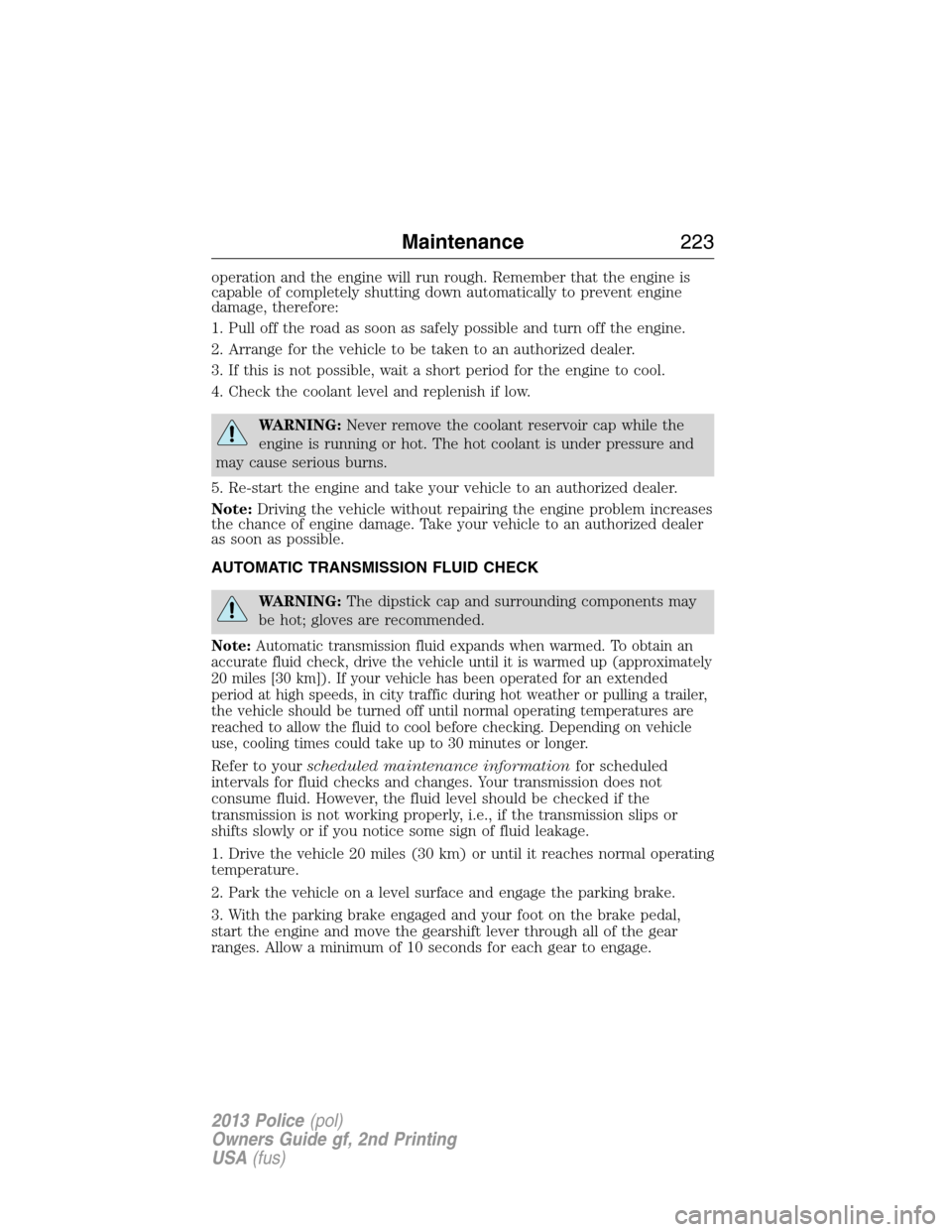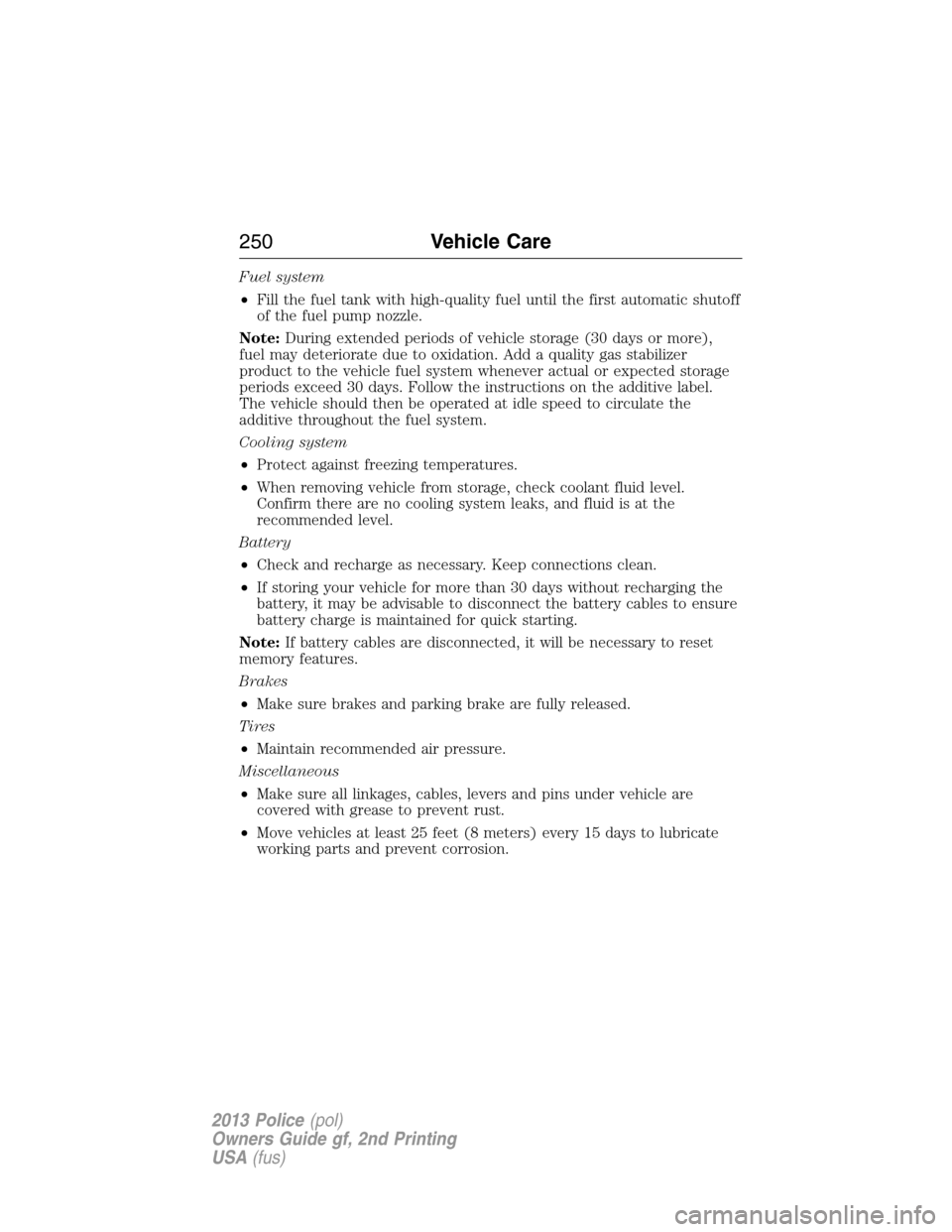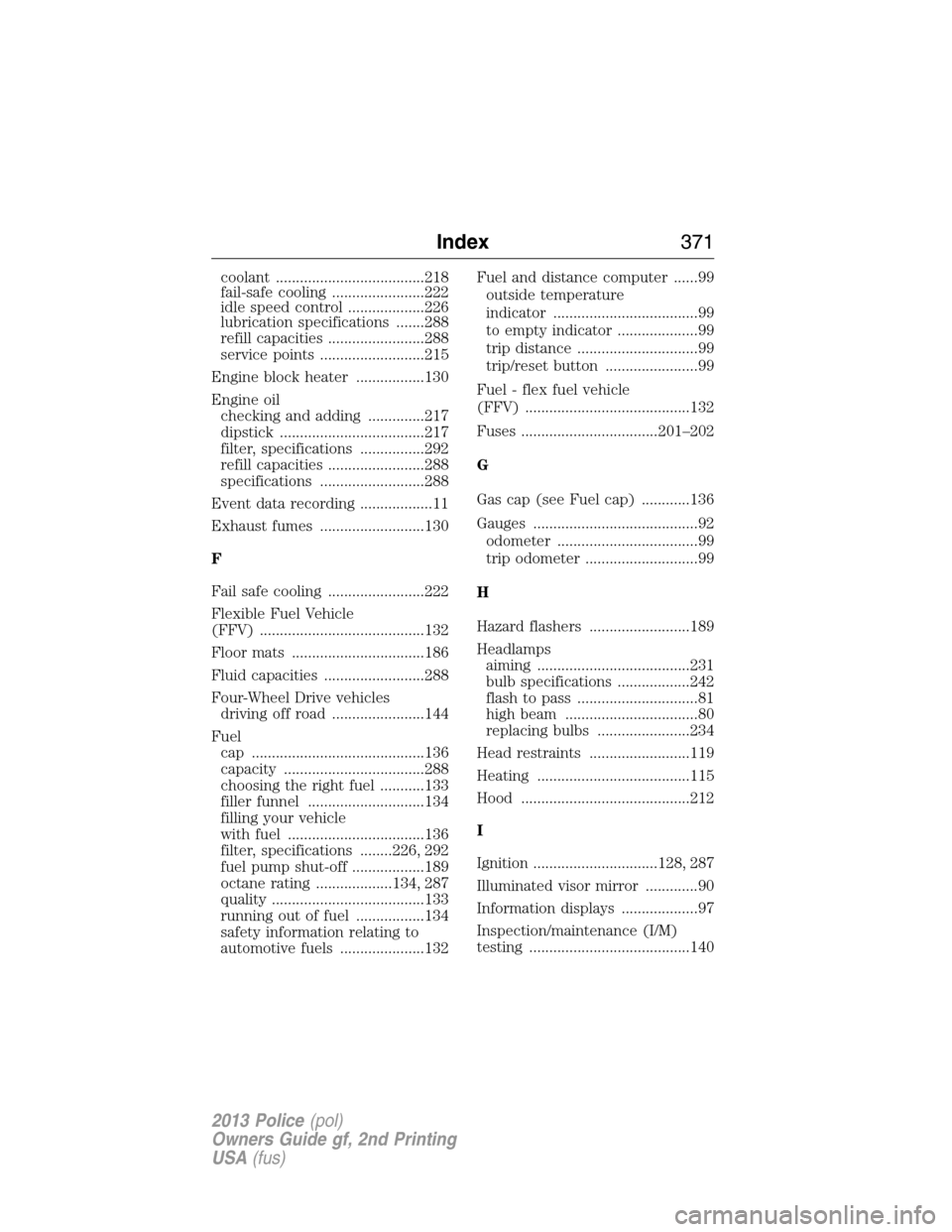Page 223 of 375

operation and the engine will run rough. Remember that the engine is
capable of completely shutting down automatically to prevent engine
damage, therefore:
1. Pull off the road as soon as safely possible and turn off the engine.
2. Arrange for the vehicle to be taken to an authorized dealer.
3. If this is not possible, wait a short period for the engine to cool.
4. Check the coolant level and replenish if low.
WARNING:Never remove the coolant reservoir cap while the
engine is running or hot. The hot coolant is under pressure and
may cause serious burns.
5. Re-start the engine and take your vehicle to an authorized dealer.
Note:Driving the vehicle without repairing the engine problem increases
the chance of engine damage. Take your vehicle to an authorized dealer
as soon as possible.
AUTOMATIC TRANSMISSION FLUID CHECK
WARNING:The dipstick cap and surrounding components may
be hot; gloves are recommended.
Note:Automatic transmission fluid expands when warmed. To obtain an
accurate fluid check, drive the vehicle until it is warmed up (approximately
20 miles [30 km]). If your vehicle has been operated for an extended
period at high speeds, in city traffic during hot weather or pulling a trailer,
the vehicle should be turned off until normal operating temperatures are
reached to allow the fluid to cool before checking. Depending on vehicle
use, cooling times could take up to 30 minutes or longer.
Refer to yourscheduled maintenance informationfor scheduled
intervals for fluid checks and changes. Your transmission does not
consume fluid. However, the fluid level should be checked if the
transmission is not working properly, i.e., if the transmission slips or
shifts slowly or if you notice some sign of fluid leakage.
1. Drive the vehicle 20 miles (30 km) or until it reaches normal operating
temperature.
2. Park the vehicle on a level surface and engage the parking brake.
3. With the parking brake engaged and your foot on the brake pedal,
start the engine and move the gearshift lever through all of the gear
ranges. Allow a minimum of 10 seconds for each gear to engage.
Maintenance223
2013 Police(pol)
Owners Guide gf, 2nd Printing
USA(fus)
Page 250 of 375

Fuel system
•Fill the fuel tank with high-quality fuel until the first automatic shutoff
of the fuel pump nozzle.
Note:During extended periods of vehicle storage (30 days or more),
fuel may deteriorate due to oxidation. Add a quality gas stabilizer
product to the vehicle fuel system whenever actual or expected storage
periods exceed 30 days. Follow the instructions on the additive label.
The vehicle should then be operated at idle speed to circulate the
additive throughout the fuel system.
Cooling system
•Protect against freezing temperatures.
•When removing vehicle from storage, check coolant fluid level.
Confirm there are no cooling system leaks, and fluid is at the
recommended level.
Battery
•Check and recharge as necessary. Keep connections clean.
•If storing your vehicle for more than 30 days without recharging the
battery, it may be advisable to disconnect the battery cables to ensure
battery charge is maintained for quick starting.
Note:If battery cables are disconnected, it will be necessary to reset
memory features.
Brakes
•Make sure brakes and parking brake are fully released.
Tires
•Maintain recommended air pressure.
Miscellaneous
•Make sure all linkages, cables, levers and pins under vehicle are
covered with grease to prevent rust.
•Move vehicles at least 25 feet (8 meters) every 15 days to lubricate
working parts and prevent corrosion.
250Vehicle Care
2013 Police(pol)
Owners Guide gf, 2nd Printing
USA(fus)
Page 371 of 375

coolant .....................................218
fail-safe cooling .......................222
idle speed control ...................226
lubrication specifications .......288
refill capacities ........................288
service points ..........................215
Engine block heater .................130
Engine oil
checking and adding ..............217
dipstick ....................................217
filter, specifications ................292
refill capacities ........................288
specifications ..........................288
Event data recording ..................11
Exhaust fumes ..........................130
F
Fail safe cooling ........................222
Flexible Fuel Vehicle
(FFV) .........................................132
Floor mats .................................186
Fluid capacities .........................288
Four-Wheel Drive vehicles
driving off road .......................144
Fuel
cap ...........................................136
capacity ...................................288
choosing the right fuel ...........133
filler funnel .............................134
filling your vehicle
with fuel ..................................136
filter, specifications ........226, 292
fuel pump shut-off ..................189
octane rating ...................134, 287
quality ......................................133
running out of fuel .................134
safety information relating to
automotive fuels .....................132Fuel and distance computer ......99
outside temperature
indicator ....................................99
to empty indicator ....................99
trip distance ..............................99
trip/reset button .......................99
Fuel - flex fuel vehicle
(FFV) .........................................132
Fuses ..................................201–202
G
Gas cap (see Fuel cap) ............136
Gauges .........................................92
odometer ...................................99
trip odometer ............................99
H
Hazard flashers .........................189
Headlamps
aiming ......................................231
bulb specifications ..................242
flash to pass ..............................81
high beam .................................80
replacing bulbs .......................234
Head restraints .........................119
Heating ......................................115
Hood ..........................................212
I
Ignition ...............................128, 287
Illuminated visor mirror .............90
Information displays ...................97
Inspection/maintenance (I/M)
testing ........................................140
Index371
2013 Police(pol)
Owners Guide gf, 2nd Printing
USA(fus)